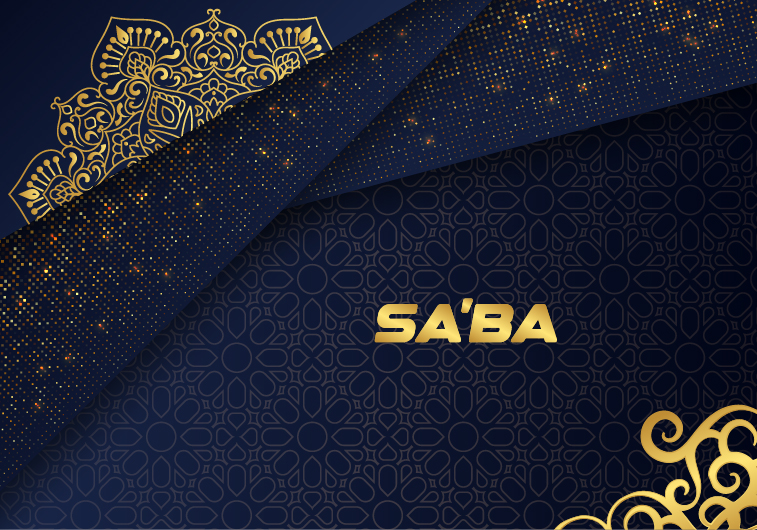ARTS AND CULTURE INFORMATION GATEWAY
Immerse yourself in the colorful world of art and culture! From traditional heritage to contemporary works, discover uniqueness that reflects the nation's identity and identity
TARIAN SABA'
Picture
1
Video
No record
Today's Visitor
3
Number of Visitors
623
Introduction and history
The Saba Performance is a traditional art form of the Malay community originating from Terengganu. It is not just an ordinary performance but is rich with ritualistic and symbolic elements, portraying a deep connection between humans and the metaphysical realm. This performance is believed to have started during the animistic period and continued to develop during the transitions of Hindu-Buddhist-Islamic influences in the Nusantara in the 13th century. Named after the "Pohon Saba" (Saba Tree), which is a central element of the performance, it incorporates a combination of music, dance, singing, and sung dialogues. The performance serves as a medium to bring harmony and balance to the community by involving cosmic elements such as earth, water, fire, and wind.
Origins and the Saba Performance
The Saba ritual originated from the animistic beliefs of the Malay community, which have deep roots in ancient times, particularly in Terengganu. It is a traditional performance art used as a healing medium, especially for addressing ailments believed to be caused by disturbances from supernatural beings. The ritual combines music, dance, singing, and chants in its execution. The mythology of Saba is associated with the "Pohon Saba," considered a symbol of the celestial garden where divine beings play. The ritual begins with invoking these celestial beings to descend to earth, provide blessings, and assist in the healing process through the mediation of the Peduan (ritual leader) and the shaman (bomoh). As a symbol of harmony between the physical and metaphysical realms, the ritual reflects the traditional community’s efforts to seek cosmic balance and well-being.
Artistic Elements in the Saba Performance
As a traditional performance art, Saba encompasses various comprehensive artistic elements. Music is a primary component, with traditional instruments like the Anak Umbang being played continuously throughout the performance. Chanting and ritual songs, such as "Lagu Awang Muda Diawan" and "Lagu Anak Tedung," are the core mediums of communication with the metaphysical realm. Dance, accompanied by symbolic movements, narrates mystical stories closely tied to the belief in celestial beings. This fusion of artistic elements provides an aesthetic depth to the Saba performance, creating a profound visual, auditory, and spiritual experience.
In the performance, Peduan serves as the central figure, acting as the leader and chanter of the rituals through songs performed alongside the Anak Umbang instrument. Peduan oversees the entire performance, ensuring that the connection between the physical and metaphysical worlds remains intact. The shaman (bomoh), another key figure, acts as the medium possessed by supernatural beings or celestial deities. Through communication with Peduan, the bomoh conveys narratives about the root causes of societal or individual problems and the solutions required. Both roles involve deep collaboration, making the performance rich with dramatic and mystical elements.
Traditional Healing Medium
The Saba Performance functions as a healing tool, especially to address disturbances believed to be caused by supernatural entities. It is conducted through a combination of music, chants, and dance to connect with the cosmos. The performance is believed to restore cosmic balance in the human body and the surrounding environment, thereby improving physical and mental well-being.
The Saba Performance is traditionally conducted over three consecutive nights.
The first night is dedicated to preparation and negotiation between the bomoh and the supernatural entities.
On the second night, performance elements such as musical instruments, offerings, and the Saba Tree (Pohon Saba) are finalized to ensure the ritual proceeds smoothly.
The third night marks the climax of the performance, where artistic elements like chanting, music, and dance are harmonized to invoke the presence of metaphysical beings.
Throughout the performance, the Anak Umbang instrument is played continuously, symbolizing the ongoing connection between the human world and the cosmos. Additionally, the performance is conducted exclusively at night, as it is believed that supernatural beings are more active during these hours.
Reference Source
Bahan Bacaan
Hassan, A. F. (2017). Warisan Seni Persembahan Yaman: Teater Saba dan Tradisinya. Kuala Lumpur: Pustaka Seni.
Mohammad, J. (2019). Teater Tradisional Arab: Dari Zaman Kuno ke Zaman Moden. Amman: Al-Ma'arif Press.
Rahman, M.K.A., (2016). Persembahan saba: Suatu ritual penyembuhan dari perspektif kosmologi. GEOGRAFIA OnlineTM Malaysian Journal of Society and Space. 12(8).
Tokoh (jika ada temu bual tokoh)
Location
State JKKN Contact Information
Encik Azaha Othman
Cultural Officer
Jabatan Kebudayaan dan Kesenian Negara Terengganu
Kompleks JKKN Terengganu
Kuala Ibai,
20400, Kuala Terengganu,
TERENGGANU DARUL IMAN
09-617 8831









